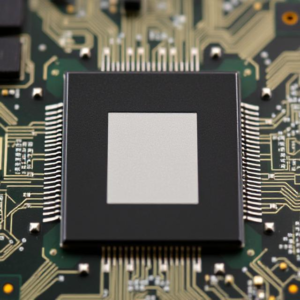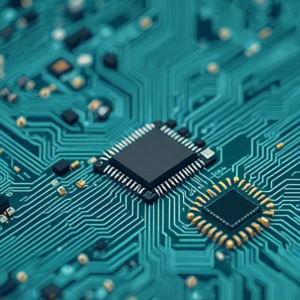What are Embedded Systems?
An embedded system is a specialized computer designed to do one specific job or task. Unlike regular computers (like laptops or phones) that can run many different applications, embedded systems are created to do just one thing, and they do it really well.
For example:
- A microwave has an embedded system that controls cooking time and temperature.
- A car’s airbag system has an embedded system that senses impact and deploys the airbags.
- A smart thermostat has an embedded system that controls the temperature of your house.

How Do Embedded Systems Work?
At the core of an embedded system is a small computer (called a microcontroller or microprocessor) that is programmed to handle specific tasks. It interacts with sensors (to get data), takes decisions (based on the programming), and then controls the system’s output (like turning on a motor, displaying something on a screen, or sending a signal to another device).
Here’s a simple breakdown:
- Input: The system receives data from sensors or user input (e.g., a button press or temperature sensor).
- Processing: The microcontroller inside the system processes the data based on pre-written instructions (the software or program).
- Output: Based on the processing, the system sends a response—this could be turning on an LED light, moving a motor, or activating a system like a heating element.
What is Embedded Systems Development?
Embedded systems development is the process of designing and creating these systems. It involves writing software (called firmware) that runs on the embedded system, as well as connecting it to hardware components like sensors, displays, motors, and other devices.
Key Components in Embedded Systems Development:
- Hardware:
- The physical parts of the system. This includes:
- Microcontroller/Microprocessor: The “brain” of the system that performs calculations and controls the system.
- Sensors: Devices that gather data, like temperature, pressure, light, etc.
- Actuators: Components that carry out actions based on the system’s decisions, like motors or lights.
- Other peripherals: Things like displays (LCD screens), buttons, or communication modules (Wi-Fi, Bluetooth) that help interact with the user or other systems.
- The physical parts of the system. This includes:
- Software:
- The program or code that tells the embedded system what to do. This software is written in programming languages like C, C++, or Python, but embedded systems often use languages that are specifically designed to work with hardware.
- The software typically includes things like:
- Drivers: Small programs that help the system talk to specific hardware (like reading data from sensors).
- Operating System: Some embedded systems use a lightweight operating system, but many don’t use an OS at all and instead have simple, custom software.
Steps in Developing an Embedded System:
- Understanding Requirements:
- First, you need to understand the task or function the embedded system is supposed to do. For example, is it controlling a smart light, reading temperature, or processing a signal?
- Designing the System:
- Decide which hardware components you need, like the microcontroller, sensors, and actuators. You’ll also need to figure out how the hardware components will communicate with each other.
- Writing the Software:
- Write the firmware that will run on the system. This involves programming the microcontroller to make decisions based on sensor inputs, handle outputs, and interact with any other devices if necessary.
- Testing and Debugging:
- After the system is built, you need to test it thoroughly. This means checking if the system works as expected and fixing any issues (bugs) in the code or hardware.
- Optimization:
- Embedded systems often need to be efficient in terms of power, processing speed, and memory usage. Developers need to make sure the system can operate in the real world under limited resources.
- Deployment:
- Once the system is tested and working, it’s ready for use. This could mean embedding it in a product, like a car, microwave, or medical device.
Examples of Embedded Systems:
- Home Appliances: Like refrigerators, washing machines, and microwaves. They use embedded systems to control their operations based on user inputs and sensors.
- Automobiles: Modern cars have many embedded systems, such as those controlling airbags, anti-lock brakes, and GPS navigation.
- Consumer Electronics: Devices like smart TVs, digital cameras, and fitness trackers all use embedded systems to function.
- Medical Devices: Embedded systems control devices like pacemakers, insulin pumps, or monitoring systems in hospitals.
Why is Embedded Systems Development Important?
- Efficiency: Embedded systems are highly efficient for performing specific tasks and are often more reliable and faster than general-purpose computers.
- Real-time Operations: Many embedded systems need to perform tasks in real-time, like controlling the brakes of a car or monitoring life-support equipment.
- Low Power Consumption: Many embedded systems are battery-powered (think of your smartwatch or remote control), so they are designed to use very little power.
In Summary:
Embedded systems development is about creating specialized, small computers that do one specific task. It involves both hardware (sensors, microcontrollers) and software (code or firmware). The process includes designing the system, writing software, testing, and deploying it into products like cars, appliances, medical devices, and much more.











